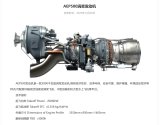J-7s and J-8s were also one sided suicide against F-15s and F-16s and at the time it was not in the interest to stir up the region without credible deterrence neither was the PLAAF of the time rich enough to sustain this.
Also, your statement is completely untrue. British engines were already pushing 2000-2500 hrs in service lifespan while in the early 60s USSRs could do 500 hrs max. You are confusing WW2 era and Coldwar.
View attachment 165351
By your logic the USSR should not be able to sustain even patrols along it's vast border and fighting NATO should be a wet dream.
No, by your logic, China should be using J-7s and J-8s instead of wrecking the engines on their 4th Gen.
Against Japan and RoC, China is in an attrition campaign. USSR was patroling "ts vast borders." China was also patroling its vast borders plus racheting up the flights against Japan and RoC.
You are making the assumption that WS-10 TBO are low but China can still do it by outputting more engines.
1) If TBO were low then why not use the WP-7/13 instead of WS-10 machines? No one is shooting anyone in these campaigns. Why not save the low time capacity on the WS-10 machines and just flood the opposing side with turbojets?
2) The only way low TBO engines can work in an attrition campaign against F-15s/F-16s AND use turbofans instead of turbojets is that China can out produce the F100/110 with the WS-10 and do the WS-10 more economical than the WP turbojet series. Both of which are likely to be untrue.
Then MTBO doesn't matter at all if the country with the supposedly low reliability engines can mount attrition campaigns against the ones with the high reliability engines.
Maybe it wouldn't matter if China were using mass turbojet aircraft against the F-15/F-16 like the Soviets. But using WS-10 engined aircraft as the main elements in the sorties pretty much means you are putting up engine vs engine and seeing if you can wear them out first.
Whatever the lead Western engines, in this case the F100/110, have over the WS-10 is pretty meaningless if China can mount their campaigns against your supposedly more reliable engines.


